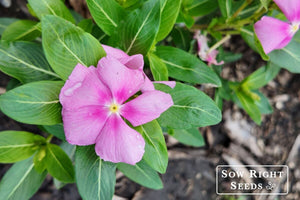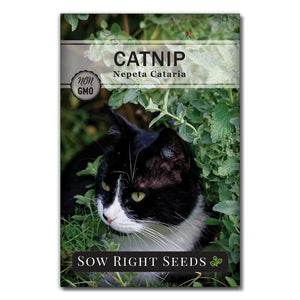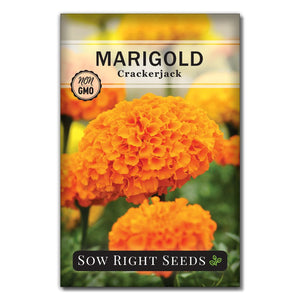Defend Your Garden: 10 Effective Ways to Keep Slugs and Snails Away
PestsSometimes, when creating a moist, warm growing environment for our plants, we also provide a hospitable home for slugs and snails. It doesn’t seem like these slow-moving creatures could do much damage. But gardener, beware! Slugs and snails move silently in the damp darkness and leave a trail of carnage in their wake. When you check your garden in the morning, you’ll wonder what happened to your happy flowers. We’ll help you see the signs of slugs and snails in your garden and share natural solutions to keep them from ruining your vegetables and flowers.

Understanding the Enemy: Slugs and Snails
Before we dive into the natural solutions, let's take a moment to understand the culprits causing the damage. Slugs and snails are soft-bodied, slow-moving creatures that thrive in moist environments. They feed on a wide variety of plants, making them a common threat to gardens. These pests are most active at night or on cloudy, damp days, which is when they do the most damage. You’ll need to find them before they find your tender seedlings.
Slugs may not move fast, but they reproduce quickly. Slugs can lay up to 80 eggs at a time, six times a year. So, it’s a good idea to eliminate them from your garden before they overwhelm your plants.
Find out where they’re coming from. Slugs and snails live under rocks, moist vegetation, and in damp and dark places. Slugs and snails avoid the sunlight and daytime predators. They’ll come out at night to feed. That’s why you won’t often see them unless you are looking for them.
Here are a few signs that you may have a slug or snail problem in your garden:
1. Chewed Leaves: Look for leaves with irregular holes or chewed edges, especially near the ground.
2. Silvery Trails: Slugs and snails leave a distinctive, silvery, slimy trail behind them as they move. This trail can often be seen on plants, garden furniture, or the ground.
3. Mucous Deposits: You might also notice slime deposits on the leaves and stems of your plants, which can hinder their growth and make them look unsightly.

10 Natural Ways to Keep Slugs and Snails from Ruining Your Plants
In our gardening past, we would have used salt and vinegar on snails and slugs. But those aren’t great for your plants. Fortunately, there are natural methods that do work and won’t harm your other plants or animals. Now that you can identify the enemy, let's explore some effective natural ways to keep slugs and snails out of your garden.
1. Beer Traps
The beer trap is one of the most popular and effective natural slug and snail deterrents. Slugs and snails are attracted to the scent of beer, and once they crawl into the trap, they'll drown. To make a beer trap, bury a shallow container, in the soil so the rim is level with the ground. Fill it with beer (at least 1 inch) and check it daily to remove the drowned pests. Be sure to refill the trap as needed, as the scent of beer can diminish over time. A mixture of sugar, water, and yeast will also work.
2. Copper Barriers
Copper is known to repel slugs and snails because it delivers a small electric shock when they come into contact with it. You can create a barrier by placing copper tape or copper wire around the perimeter of your garden beds or pots. This simple solution can be highly effective in preventing these pests from reaching your precious plants. Make sure the area doesn’t already have slugs inside. Otherwise, you’re just trapping them in, where they will continue reproducing.
3. Diatomaceous Earth
Diatomaceous earth (DE) is a fine, powdery substance made from the fossilized remains of diatoms. It is non-toxic to humans and animals but can be deadly to slugs and snails. When these pests come into contact with DE, it dehydrates them, ultimately leading to their demise. Sprinkle a thick layer at least an inch wide of diatomaceous earth around the base of your plants to create a barrier. Reapply after rain or heavy watering, as DE loses its effectiveness when wet. Use food grade or one labeled for pest control.

4. Eggshells
Crushed eggshells can be a natural and cost-effective way to deter slugs and snails. These creatures dislike crawling over sharp and jagged surfaces, so the rough texture of crushed eggshells acts as a natural deterrent. Save your eggshells, dry them, and crush them into small pieces. Sprinkle them around your plants to create a protective barrier. Seashells and other jagged barriers can also be effective. But these need to be in a thick layer and wide enough that slugs and snails won’t cross it.
5. Encourage Natural Predators
Encourage natural predators in your garden to help control the slug and snail population. Frogs, toads, birds, and ground beetles are known to feast on these pests. To attract these helpful creatures, create a welcoming environment by adding a small pond or bird feeders to your garden. You can also provide shelter for toads and frogs by placing overturned flower pots or stones in shady areas. If you have pet chickens or ducks, they also love to feast on snails.
6. Hand-Picking
Although it may not be the most pleasant task, hand-picking slugs and snails can be an effective way to control their numbers, especially in smaller gardens. Simply go out in the evening or early morning when they are most active and pick them off your plants. Slugs leave a trail of shiny mucus that you can follow back to their hiding place. Wetting the soil and placing a board over it will create a hiding place. Then, you can turn it over in the morning and pick off the slugs and snails. You can wear gloves or use tongs to avoid direct contact with these creatures.
7. Companion Planting
Companion planting involves growing certain plants together to help each other thrive or repel pests. Some plants are known to repel slugs and snails, so consider planting them alongside your vulnerable crops. Plants like garlic, onions, mint, and rosemary are natural repellents that can help keep these pests away. Slugs don’t generally eat plants that are spiky and have strong oils like lavender and sage.

8. Organic Slug and Snail Baits
If you prefer a ready-made solution, organic slug and snail baits are available that are safe for your garden and the environment. These baits are usually made from iron phosphate, which is harmless to humans, pets, and wildlife. Scatter the bait around your garden, following the package instructions, and keep an eye on the results. Check the ingredients to ensure they don’t have metaldehyde or other chemicals that can harm animals that eat snails and slugs.
9. Reduce Moisture
Since slugs and snails thrive in moist conditions, reducing excess moisture in your garden can make it less appealing to them. Water your garden in the morning to allow the ground time to dry off before nightfall. Avoid overwatering your plants, and use a drip irrigation system to keep the soil around your plants dry. Additionally, consider spacing your plants further apart to improve air circulation and reduce humidity.
10. Remove Their Hiding Places
Regular maintenance will keep your garden clean and tidy. Remove debris, fallen leaves, and weeds that provide hiding spots and shelter for these pests. Rake up your fall leaves and make leaf mold, clean up empty pots, and store them up off the ground in a dry location. Keeping your garden well-maintained will make it less inviting for slugs and snails to take up residence.

Dealing with slugs and snails in your garden can be a frustrating experience. But with these natural and eco-friendly solutions, you can protect your vegetables and flowers without resorting to harmful chemicals. Remember that it may take a combination of methods to control these pests effectively, so don't be discouraged if you don't see instant results. With patience and persistence, you can create a garden that thrives while keeping slugs and snails at bay.
Found this information helpful? Share it with your gardening friends!






I’m thinking of replacing my mulch, (which stays moist and grows mold underneath) with volcanic rock, since snails & slugs hate sharp objects, and rocks dry out way faster.
I am using a mixture of water and clear (white) vinegar in a pressure sprayer. The second the liquid touches the slug it acts as though it is melting and immediately drops off the plant. MAGIC!
Slugs really went after my desert roses. Copper somehow electrocutes them, and I remembered I had thin copper wire from little solar fairy Christmas lights. So I gently draped a set of lights around each desert rose plant. The copper so thin you really can’t see it in the day. Slugs no longer want to mess with my roses and is a very unexpected bonus beautiful little cream lights turn on at night because they were solar!
Like most everything this new year, only a nuke can get rid of these garden pests and indoor pests like moths and roaches, so we may need to take a deep breath and go back and use companion plants, as this truely is the first time after , doing all of the inclusive, tried and failed , suggestions, ever put out there finally I am seeing a turn around in my garden by using nature against its enemies!!! So read up on companion planting as borders and in pots!! Hope You too gain the success I am finally seeing!! Naturally!!🙃😉
Marigolds-gone
Crystanths- half gone
Begonias stayed – that’s what I’ll replace the buffet with I think!
Leave a comment